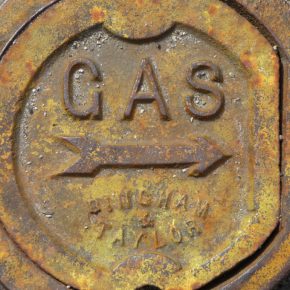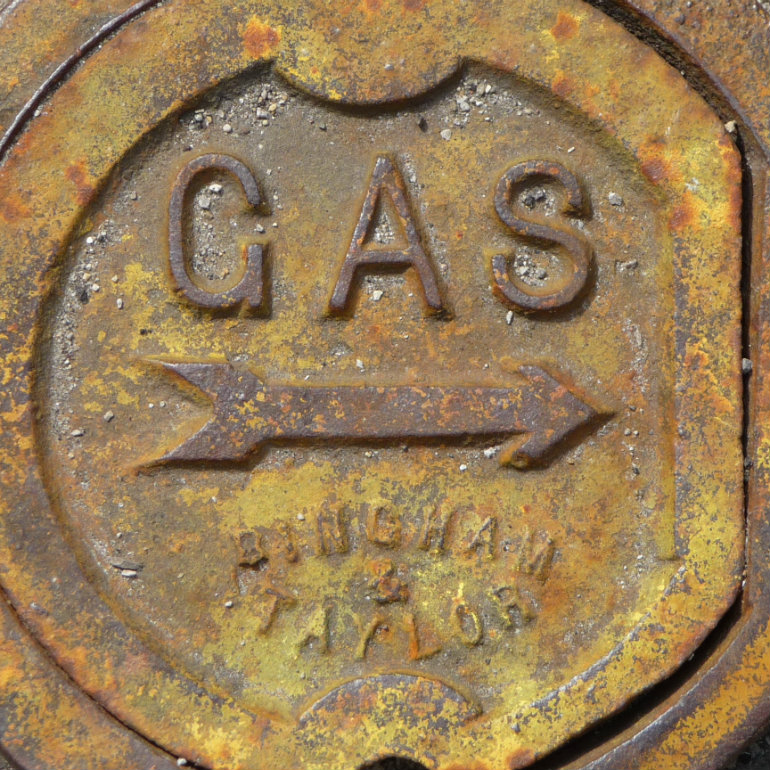Tydzień w gospodarce
Category: Trendy gospodarcze

(John Kannenberg, CC BY-NC-ND)
But Gazprom itself and various energy experts believe the strategy will not alter Poland’s current situation very much.
Polish state-run oil and gas firm PGNiG currently buys about 10.2 billion cubic meters (bcm) of gas a year from Gazprom, accounting for most of Poland’s annual consumption of nearly 15 bcm. The present contract was signed in 1996. Poland was Gazprom’s fifth-biggest EU customer in 2015, buying about 9 bcm and paying over USD2bn.
“Of course, everybody is free to choose how to purchase his gas and to ensure the competitiveness of his economy,” Gazprom Deputy Chief Executive Officer Alexander Medvedev said. “But there is a well-known fairy-tale about an old woman who asked a golden fish to turn her into a Sea Empress but in the end she found herself back with her broken washtub in front of her,” he said, referring to a story by Alexander Pushkin.
Poland relies on Russian gas for two-thirds of its needs and wants lower prices from Gazprom amid political tensions over President Vladimir Putin’s policies in eastern Europe.
The country has already had its first shipments of liquefied natural gas (LNG) from Qatar and Norway supplied to a new terminal and has proposed doubling its capacity and building a pipeline to Norway to completely cut its reliance on Russia.
However, Gazprom still sees room to reach an out-of-court agreement on pricing with PGNiG, Medvedev said. A deal was apparently ready last year but wasn’t signed because of elections in Poland and changes in PGNiG’s leadership.
„We will be aiming at a situation where a long-term contract becomes a thing of the past,” government energy official Piotr Naimski said recently. “If the price of Russian gas is competitive enough we do not rule out buying it, but definitely not as part of a long-term contract,” he added.
Russian energy expert Alexey Belogoryev Kulagin noted that Lithuania’s experience, which decided not to buy Russian gas for political reasons, had not worked out well.
„Lithuania started to buy LNG in the United States and it turned out that these purchases are significantly more expensive than Russian gas,” he warned, noting that today the Russian gas price is more favorable than the spot trade, which is why the interest of European consumers to supplies from Russia is growing.
„After 2022 Poland may buy Russian gas on spot markets, moreover, a new contract on different conditions is possible,” Russian energy scientist Vyacheslav Kulagin from the Center for Studies of World Energy Markets at the RAS Institute of Energy Research told Vestnik Kavkaza in June.
„Poland understands that it needs gas, so it has to find it somewhere. If it is Norwegian gas, then someone else will not receive those 10 bcm of gas per year that Warsaw needs, for example Germany. And it will be Germany which will have to replace Norwegian supplies with Russian gas. As a result, there will be some redistribution of the market, but it will not affect export volumes from Russia to Europe,” the expert said.
Poland has built its first liquefied natural gas (LNG) terminal in Swinoujscie in northern Poland and has touted plans to build a pipeline across the North Sea to Norway. Naimski belives that thanks to the LNG terminal, Poland will be able to import up to 5 bcm of gas a year. But to date one long-term contract has been agreed for the terminal, with Qatargas, to supply PGNiG with 1.5 bcm annually.
The planned pipeline to carry gas from Norway would be ready by 2022, with Naimski saying Poland could import 10 bcm of gas annually through it.
The pipeline would run from Norway through Denmark and the Baltic Sea to Poland and the project is being analyzed by gas grid operators from all the involved countries.
A Warsaw-based energy analyst said that the Nord Stream2 project is progressing despite the objections of Ukraine, Baltic States and Poland and that the Russian gas pipeline that avoids Poland to transport gas to Western Europe goes against the provisions of the Third EU Energy Legislation Pack, which assumes amongst other things a separation of gas transmission and trading and broader third party access to transmission assets. Nord Stream2 in full operation could – he believes – make the LNG terminals in Poland and in Lithuania no longer economically viable and the make the EU more dependent on Russian natural gas.
Naimski also said that Poland will remain dependent on coal in the foreseeable future. The country generates around 80 per cent of its electricity from polluting coal power plants.
„Our power industry relies on coal and this will remain so for more or less 30 years. The actions which are aimed at ruling out this kind of energy are against our interests,” Naimski said, referring to the EU’s decarbonisation policies.
Meanwhile, the government is assessing whether to merge its major oil and gas companies, Naimski went on.
The treasury minister said in January that Poland was considering tie-ups between the state-run oil refiners PKN Orlen and Lotos, and PGNiG, to create central Europe’s largest energy company. Since then government officials have gone quiet on the plan.
„Various options are being considered at the moment, but there is no rush. We are analyzing, calculating, this is being influenced by external conditions, oil prices. It could happen that some steps will be taken, but there is no such decision at the moment,” Naimski said.
“We are ready for a discussion about a gas link. We are counting on the European Union’s support, as it would be a cross-border project,” Polish Deputy Prime Minister, responsible for economic development, Mateusz Morawiecki reportedly said on his way to Vilnius.
Earlier this year, the EU awarded EUR295.4m for the construction of a gas pipeline between Lithuania and Poland. The Polish transmission system operator Gas Transmission Operator Gaz-System S.A and the Lithuanian transmission system operator AB Amber Grid inked a trilateral agreement with the EU Innovation Network Executive Agency (INEA).
Meanwhile energy market regulators in Poland and Lithuania are looking into whether Polish electricity grid operator PSE has broken EU rules by limiting Lithuanian imports. Import restrictions would violate article 102 of the Treaty on the Functioning of the EU, which prohibits unfair trading conditions.
The investigation started after Estonia’s state-owned power group Eesti Energia filed a request in April asking if the restrictions comply with EU regulations. „The situation is definitely problematic as the Polish TSO (transmission system operator: PSE) clearly is not acting in accordance with its previously made statements and officially submitted information,” Hando Sutter, the company’s CEO said.
After Lithuania and Poland started power transactions on their first 500-megawatt link last December, PSE has created some restrictions, which are seen by some as adding to existing tensions between Warsaw’s Eurosceptic government and the European Commission and could be in breach of EU market rules, legal experts said.
„The Commission and the Polish regulator have received a request from a market participant regarding the situation when transmission capacity from the Polish side is limited to zero during night hours,” Lithuania’s National Commission for Energy Control and Prices, said.
PSE said unregulated power imports „can destabilize the system” at night, when demand is low and government officials said it was a necessary step to protect its coal power plants, a source of 80% of electricity, from imports of „cheap, subsidized electricity.”
„The day and night fluctuations, which could be caused by the excess of electricity coming from the Baltic states to Poland, are a threat to our power stations,” said Naimski.
Asked whether Warsaw was discussing the issue of power import restrictions with the European Commission, Naimski said: „We are trying to explain this situation and we are looking for some understanding for (the) Polish energy system.”
Lithuania is connected to Poland and Sweden using high voltage direct current. This technology is designed to connect asynchronous grids, transmit power over long distances with lower losses and to control the electricity flows.
The construction of both interconnections is the single largest investment in the Lithuanian electricity system since independence in 1991. By 2020, demand for electricity in Lithuania, Latvia and Estonia is expected to rise by 1.1 per cent annually. As soon as the NordBalt and LitPol Link starts fully working, the opportunities of Baltic countries to transmit electricity from their neighbours will increase by 1/3.
“Both Poland and Lithuania have enhanced their energy security through the ability to import and export power. The increase of transmission capacity of cross-border interconnections is extremely important considering the security of supply”, Henryk Majchrzak, CEO of PSE, said.
“A reliable infrastructure, being the platform for uninterrupted exchange and supply of electricity is the key element of the modern state because it is determining its economic growth,” Majchrzak added.
With a capacity of 500 MW, the LitPol Link completes the electricity ring of the Baltic region. The 400 kV overhead power line extends 163 km through the districts of Alytus and Lazdijai in Lithuania, and Podlachia, Warmia and Mazury in Poland. The project investment in Poland is EUR430m, and almost half of it was financed by the EU.
In Lithuania, all works related to the interconnection received 150 million EUR, and the EU contribution was EUR31.4m. The first Lithuania-Poland interconnection project was implemented by Litgrid and PSE, Lithuania and Poland’s respective electricity transmission system operators.



